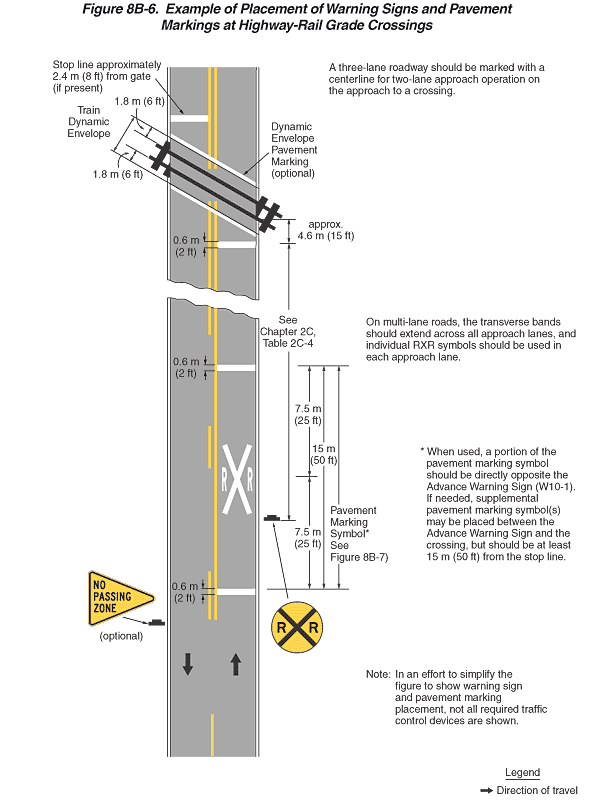
Figure 8B-6. Example of Placement of Warning Signs and Pavement Markings at Highway-Rail Grade Crossings
This figure illustrates the placement of warning signs and pavement markings at highway-rail grade crossings.
This figure shows a segment of a vertical two-lane roadway. At the top of the figure, a symbol of a railroad track is shown, placed diagonally across the roadway at an acute angle, slanting from the northwest on the left to the southeast on the right. A legend shows a black arrow indicating the direction of travel. Black arrows on the roadway show the direction of travel as one lane in each direction. At the top of the figure, the opposing lanes are shown separated by a solid double yellow line. At the bottom of the figure, the opposing lanes are shown separated by a broken yellow line to the left of a solid yellow line. A note states: "A three-lane roadway should be marked with a centerline for two-lane approach operation on the approach to a crossing."
At the bottom of the figure, a horizontal white line is shown extending across the right lane. It is shown as a dimension of 0.6 m (2 ft) wide. In advance of this sign and to the left of the roadway, a yellow isosceles triangular sign is shown with the words "NO PASSING ZONE" on three lines and marked as optional. A note states: "In an effort to simplify the figure to show warning sign and pavement marking placement, not all required traffic control devices are shown."
Beyond the horizontal white line, a "RXR" pavement marking symbol and another horizontal white line are shown. The second horizontal line is also shown as a dimension of 0.6 m (2 ft) wide. The distance from the near edge of the first horizontal line to the far edge of the second is shown as a dimensioned distance of 15 m (50 ft). Between the two horizontal lines, a white "X" is shown with a white "R" on each side of it. The center of the "X" is shown as a dimension of 7.5 m (25 ft) from the near edge of the first white horizontal line and the far edge of the second horizontal line. At the beginning of the "RXR" marking, a round yellow sign with a black border and legend is shown to the right of the roadway. A black "X" covers the sign, and two "R's" are shown in the left and right quadrants of the sign. A notes states "See Chapter 2C, Table 2C-4" for the distance from this sign to the edge of the stop line in advance of the railroad track. Notes next to the pavement marking symbol state: "See Figure 8B-7. When used, a port ion of the pavement marking symbol should be directly opposite the Advance Warning Sign (W10-1). If needed, supplemental pavement marking symbol(s) may be placed between the Advance Warning Sign and the crossing, but should be at least 15 meters (50 ft) from the stop line."
Beyond the "RXR" marking, a horizontal white line is shown extending across the right lane in advance of the railroad track. It is shown as a dimension of 0.6 m (2 ft) wide. A second horizontal line is shown on the far side of the railroad track. The horizontal lines are shown as a dimensioned distance of approximately 2.4 m (8 ft) from the gate (if present) and 4.6 m (15 ft) from the outside edge of the railroad track.
Beyond the first horizontal line, a symbol of a railroad track is shown, placed diagonally across the roadway at an acute angle, slanting from the northwest on the left to the southeast on the right. The train dynamic envelope is shown. A white transverse band on the pavement is shown extending across the entire roadway on each side of the railroad track. These lines are shown at the edge of the dynamic envelope or 1.8 m (6 ft) from the outside edge of the railroad track. A note states: "On multi-lane roads, the transverse bands should extend across all approach lanes, and individual RXR symbols should be used in each approach lane."
